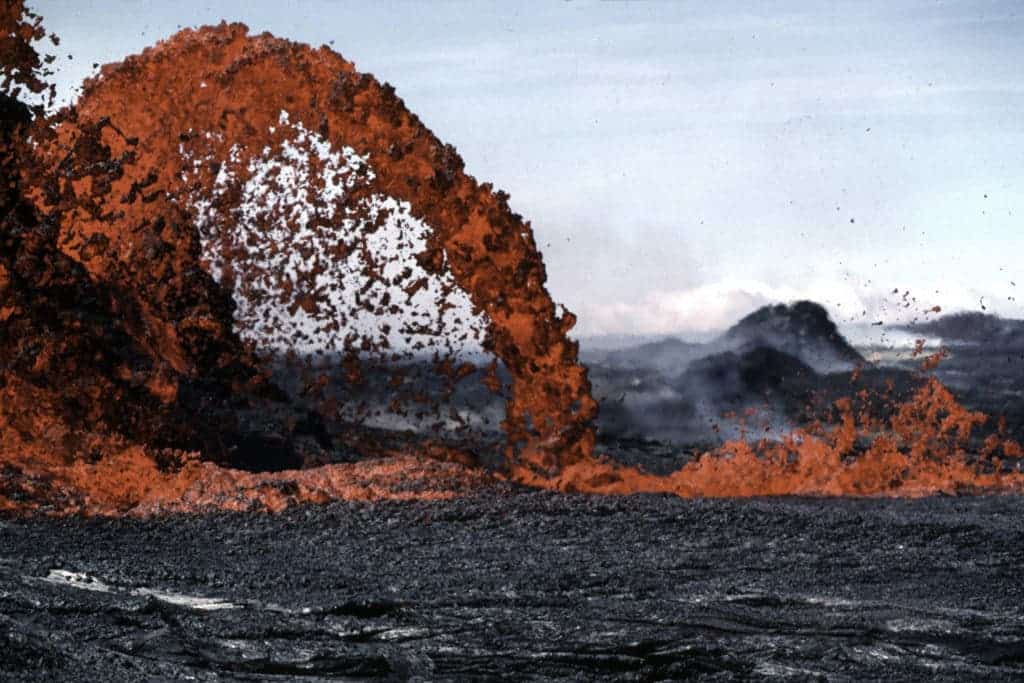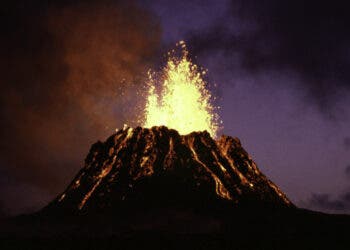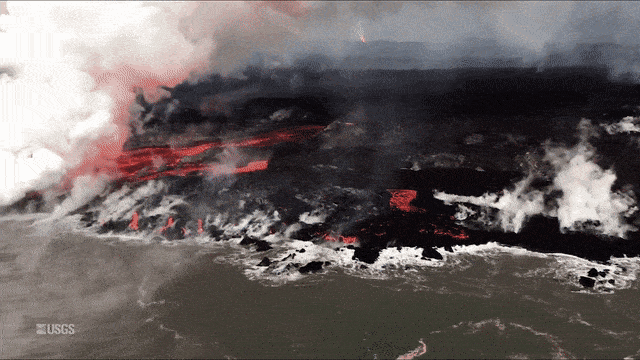The eruption of the Kilauea volcano last year in Hawaii had a destructive effect on land, tearing apart more than 700 homes and covering land with volcanic rock. But, on the ocean, the lava had a different effect, stimulating a massive bloom of planktonic algae, or phytoplankton, according to a new study.

The research, led by researchers at the University of Hawai’i (UH) at Mānoa and University of Southern California (USC), showed that this biological response hinged on unexpectedly high concentrations of nitrate, despite the negligible amount of nitrogen in basaltic lava.
The team, whose research was published in the journal Science, determined that nitrate was brought to the surface ocean when heat from the substantial input of lava into the ocean warmed nutrient-rich deep waters and caused them to rise up, supplying the sunlit layer with nutrients.
“There was no reason for us to expect that algae bloom like this would happen,” geochemist Seth John, assistant professor of Earth sciences at USC Dornsife and an author of the study, said in a press release. “Lava doesn’t contain any nitrate.”
John and the rest of the team observed the phytoplankton bloom in satellite images, leading to organize a rapid response oceanographic expedition on UH research vessel Ka’imikai-O-Kanaloa from July 13 to 17, 2018—in the thick of Kilauea’s activity.
They discovered that since there was so much lava in the water, the dissolved iron and phosphate combined into particles, making those nutrients unavailable for microbes. Further, deep, heated seawater became buoyant and brought up nitrate which caused other classes of phytoplankton to bloom.
The team believes that this mechanism has led to similar ocean fertilization events in the past associated with the formation of the Hawaiian Islands and other significant volcanic eruptions. Depending on their location, sustained eruption on this scale could also facilitate a large flux of nitrate from the deep ocean and perturb larger-scale ocean circulation, biology, and chemistry.
“The expedition in July 2018 provided a unique opportunity to see first-hand how a massive input of external nutrients alters marine ecosystems that are finely attuned to low-nutrient conditions,” said co-author Sam Wilson. “Ecosystem responses to such a substantial addition of nutrients are rarely observed or sampled in real-time.”
Planktonic algae or phytoplankton, like the one found in the ocean due to the volcano, plays a vital role in the ocean ecosystem. It forms the base of the ocean’s food chain and is an important food source for zooplankton, fish, and crustaceans, which are quickly gobbled up by larger ocean-dwellers like sharks, seals, and whales.






